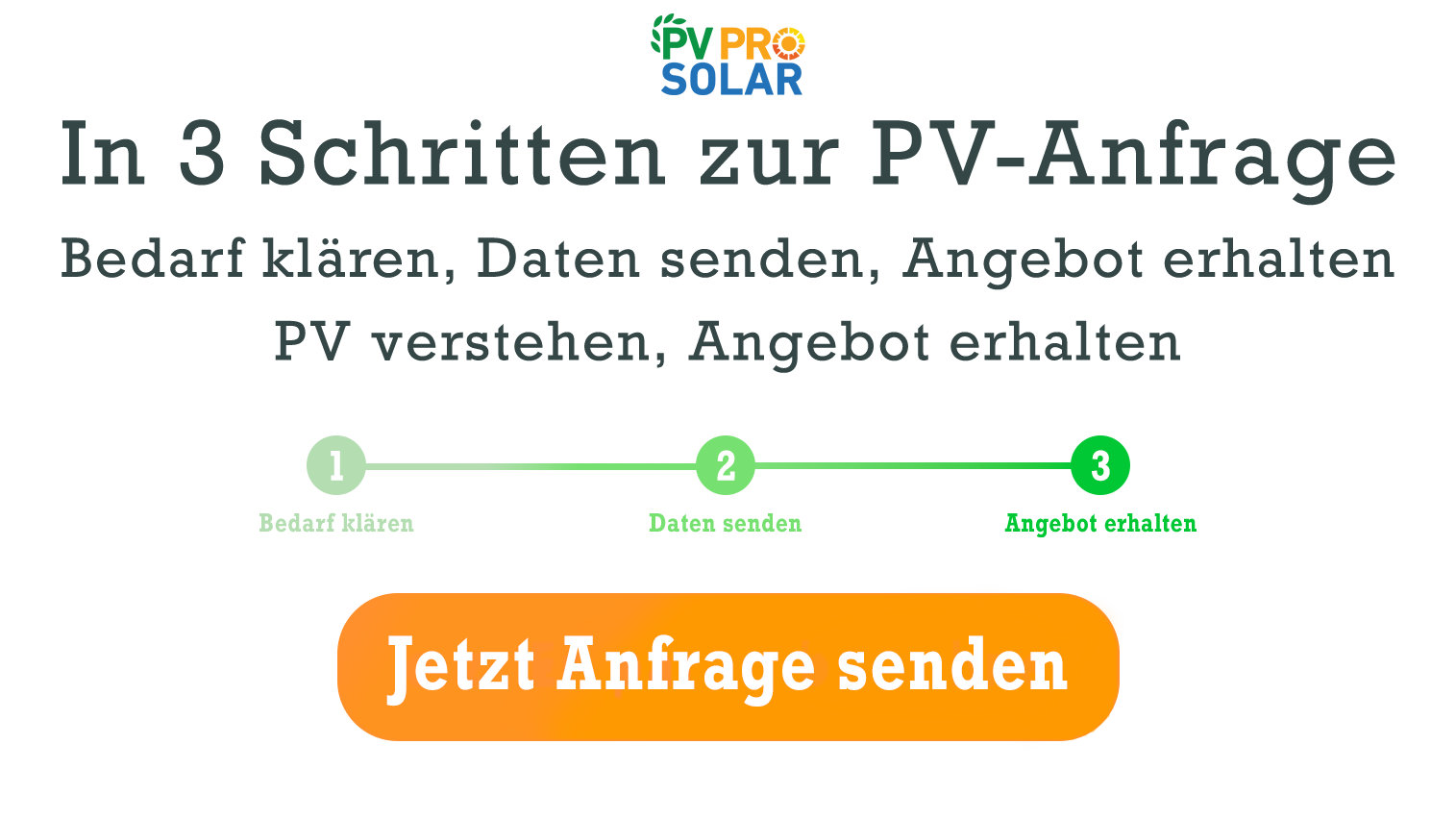Solar System Calculator: Your Digital Key to Accurate PV Planning
A modern solar system calculator is far more than just a simple cost estimation tool – it’s the essential first step for anyone planning their energy future. In just a few minutes, it delivers reliable data on profitability, payback periods, and energy yields – no complex formulas or expert knowledge required.
Why a Solar System Calculator Is Indispensable?
As demand for photovoltaic (PV) systems continues to rise, so does the need for fast, digital solutions. An online solar calculator allows users to estimate individual yields and cost structures with just a few clicks.
This convenient online tool processes regional solar radiation data, roof pitch, orientation, and electricity consumption – providing a realistic foundation for personalized profitability calculations.
Especially useful for beginners, the solar system calculator, available without registration, offers a quick, no-obligation first assessment – easily accessible via smartphone or laptop.
How Does a Solar Calculator Work?
Most calculators follow the same principle: You enter a few basic data points, and a complex PV simulation runs in the background, factoring in multiple variables.
Typical input data includes:
- Postal code / Location: Determines local solar radiation in kWh/m²
- Roof size and pitch: Defines potential module surface and yields
- Orientation: The solar orientation calculator identifies the optimal angle
- Annual electricity consumption: Helps determine the system size
- Battery option: A solar calculator with battery simulation can precisely calculate energy independence
The calculator also takes into account local incentives, electricity prices, and future feed-in tariffs. This makes the PV calculation much more realistic than generic online estimates.
Types of Solar Calculators
Not all calculators provide the same results. There are various approaches – from basic tools to advanced simulations.
1. Cost and Yield Calculators
These calculators provide an overview of installation costs (including inverter, mounting, and cabling) and expected annual energy yield.
2. Payback Calculators
A payback calculator shows how many years it will take for the system to pay for itself through energy savings and feed-in revenues. For most households, the payback period ranges between 8 and 12 years.
3. Calculators with Battery Simulation
For those looking to maximize self-consumption, a solar calculator with battery simulation can demonstrate how a lithium-ion storage system affects electricity costs, self-sufficiency, and return on investment.
4. Tools for Balcony Solar Systems
Even mini PV systems can be simulated using plug-in solar calculators. These tools help calculate the yield of compact systems (e.g., 600 or 800 W) – ideal for renters and city apartments.
How Accurate Are Online Calculators?
A good solar calculator online uses real-time data from national weather services and includes current incentive programs. It considers roof orientation, shading, system losses, and operational parameters.
While the results are simulations, reputable tools typically have a deviation of just ±10%. For binding project planning, a technical review by PVPro Solar or a certified installer is recommended.
Free Photovoltaic Calculators – What Can They Really Do?
Many websites now offer free photovoltaic calculators. But not all are equally precise.
What matters is that a free PV calculator doesn’t just give rough estimates – it should incorporate consumption patterns, storage options, and incentive programs into its calculations.
Key features to look for:
- Transparent calculation methodology
- Integration of current EEG values and inflation factors
- Choice of PV module type and efficiency
- Realistic modeling of system losses (~10%)
Such intuitive online tools allow for quick yet reliable personal profitability analyses.
How Is Payback Time Calculated?
The solar payback calculator uses a simple formula:
Total Cost ÷ Annual Savings = Payback Period
Example:
- Installation cost: €14,000
- 70% self-consumption, 30% feed-in
- Annual savings: €1,700 → Payback in approx. 8.2 years
With a battery, the self-consumption rate can increase up to 85%, further shortening the return on investment. This makes the PV calculation even more optimized.
Calculators Rated by Stiftung Warentest
Some platforms have been reviewed by Stiftung Warentest. The Stiftung Warentest solar calculator was praised for its ease of use and precise data evaluation.
It allows for quick comparisons between different scenarios and provides realistic calculations of investment, maintenance, and returns over 20 years.
Advantages of Modern Online Calculators
The new generation of intuitive solar calculators makes PV planning more accessible than ever before.
With just a few inputs, you receive a personalized profitability analysis – including incentives and payback time.
This saves time on lengthy consultations and provides a sound basis for investment decisions.
Your benefits at a glance:
- Instant results within seconds
- No cost or registration required
- Compare different roof setups and storage sizes
- Dynamic calculations based on electricity prices and incentive programs
- Guidance on optimal system sizing
A solar calculator is more than just a tool – it’s a key step toward energy independence.
What to Keep in Mind When Interpreting Results?
A calculator is no substitute for professional system design. PV calculations rely on standardized values and may not fully reflect local factors (e.g., shading from trees or nearby buildings).
Therefore, any online estimate should be seen as a guideline – not a binding quote.
Another key point: Many calculators use average system costs. However, prices can vary significantly based on the manufacturer, installation type, and region. It’s wise to follow up the initial simulation with a technical consultation from PVPro Solar.
When Does a Solar Calculator Make the Most Sense?
- For new builds: To size the PV system in line with the building
- Before renovations: To assess the roof condition and cost-effectiveness
- For businesses: To calculate the savings potential from high daytime use
- For investors: To analyze returns and eligible subsidies
If you’re comparing multiple sites, an online solar calculator can greatly simplify decision-making. It delivers key figures such as yield, payback, and CO₂ savings – all within seconds.
Advanced Features of Modern PV Tools
Today’s calculators go far beyond basic estimations. Many now include:
- Long-term yield forecasts based on weather databases
- Investment planners with yearly cost/yield overviews
- Incentive checkers for KfW and BAFA programs
- Simulations of self-consumption and battery size
- Interfaces for e-mobility (e.g., wallboxes and V2G systems)
This turns a simple solar calculator into a comprehensive energy planning tool for both private users and commercial entities.
How Accurate Are Energy and Cost Predictions?
The solar cost calculator always provides estimates – not guarantees. But with accurate input (consumption, orientation, pitch, battery size), deviations are often below 10%.
Many tools apply correction factors based on data from over 100,000 installed systems – making PV calculations increasingly reliable and closely aligned with real-world results.
Calculators for Unique Roof Types and Locations
Not all roofs are created equal. That’s why some tools offer additional modules for:
- Flat roofs with adjustable pitch
- East/West roofs for optimized daily yield curves
- Green roofs with special load calculations
- Historic buildings with strict spacing and structural rules
A reliable solar orientation calculator helps determine the ideal angle and most efficient module layout – a crucial step for maximizing energy output.
When Does an Online Calculator Reach Its Limits?
As helpful as digital tools are, there are situations where expert consultation is essential:
- Complex roof structures with shading
- Multi-family buildings with shared use
- Commercial properties with high peak loads
- Integration with heat pumps or EV infrastructure
In these cases, PVPro Solar combines online analysis with internal photovoltaic modeling to evaluate such special cases – far more accurately than standard calculators.
Getting the Most Out of Your Solar Calculator
- Compare multiple tools: Use at least two different calculators to cross-check results
- Use accurate consumption data: Pull figures from electricity bills, not estimates
- Simulate with battery storage: For a realistic view of self-consumption
- Include incentives: Consider EEG, KfW, BAFA, and local programs
- Request a quote from a qualified installer: For technical validation
The Future of PV Planning: Automated Simulations & AI
The technology continues to evolve. In the future, free photovoltaic calculators will use AI-based yield forecasting. These tools will analyze shading using Google Maps, track weather trends, and calculate optimal battery sizes.
It calculates the energy yield, costs, and payback time of your PV system based on your location, roof size, and consumption data.
Yes, many PV calculators are free and offer quick, non-binding energy and cost assessments.
Good online tools offer realistic values with deviations of only about 10%, depending on input quality and location. What does a solar calculator do?
Is a solar calculator free to use?
How accurate are the results?









